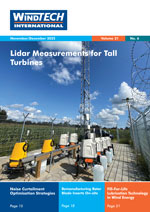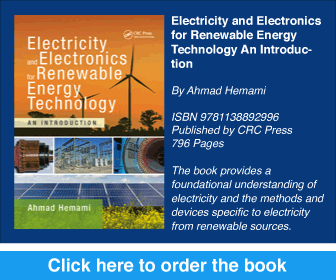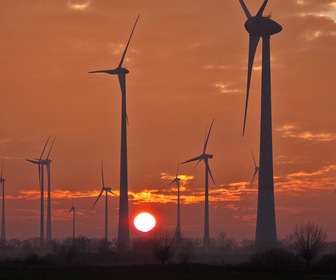Applications and Technology
Wind turbines are not only used to generate electricity but also, for example, for desalination of water. In our January/February issue we published an article about the floating turbine from the company Blue H Technologies. It is clear that other parties are also interested in this concept. Based on this concept, a floating, autonomous desalination unit has been designed and developed by a group of Greek companies, universities and research centres.
The development of large offshore wind farms produces a need for accurate models of all main components in a wind farm because simulations are widely used to predict what happens in case of faults and switching operations in the grid. DELTA has built a system for measuring fast transients synchronously in three different locations on a wind farm. The measuring system described in the article on page 21 consists of three units of measurement synchronised using GPS. Phase-earth voltages are measured using capacitive voltage sensors and phase currents using Rogowski coils.
The ever-increasing strain on the traditional exploration of natural resources to provide for the worldwide demand for energy is paving the way for the wind turbine sector. We are seeing a dramatic increase in the number and size of wind turbines, producing more watts by the day. Our sector has no shortage of technological needs, but no shortage of creative minds either. Nowadays, commercial and academic institutions are reaping the benefits of joint developments. One of many exciting new developments combines the hands-on knowledge of wind turbine mechanics with photosensor technology. The article on page 27 details a reliable and accurate method for measuring angular velocities, rotor blade pitch angles and the perpendicularity of individual rotor blades using vision technology. This technology is a good example of how techniques used commonly for other industries benefit the development wind energy.
By the time this issue reaches your desk the conference season will have started with EWEC 2008, with many events to follow. As always, we will be looking for new developments and concepts and? will inform you about them in future issues. In the meantime, I wish you much reading pleasure and look forward to meeting you in person at one of the upcoming events.
Floris Siteur
Publisher{/access}










